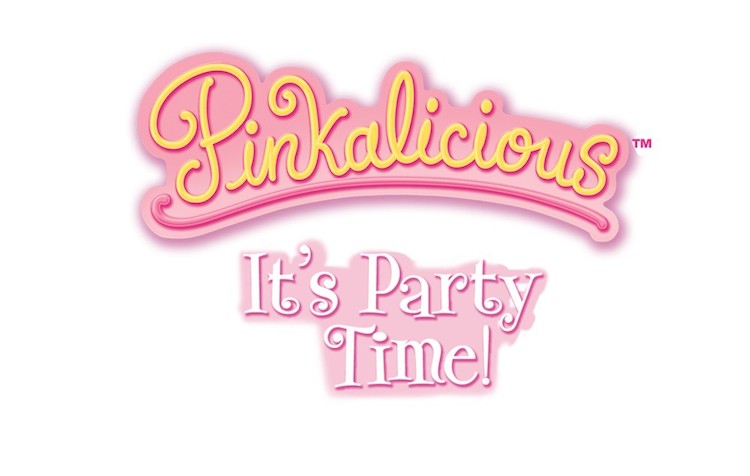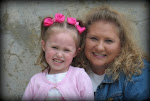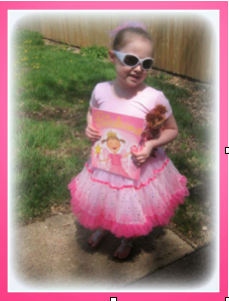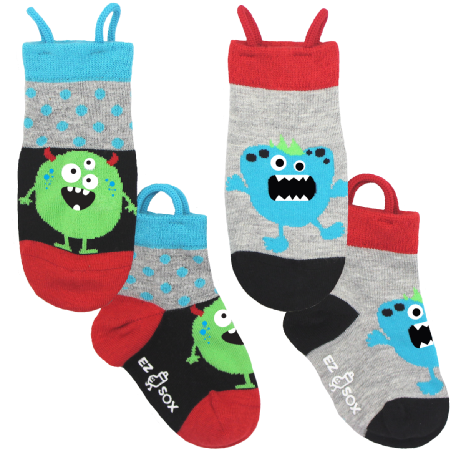Autism Therapy the Pinkalicious Way, Pt. 1

Guest blogger Amy Stout is here today and tomorrow to share one of her family’s recent adventures with Kylie, their daughter who experiences autism. She’s here with the story of a very pink, very creative, and very successful adventure in autism therapy. Today, she explains why and how the party came to be. Tomorrow, she’ll be back with a report on how it went.
The Pinkalicious (Feeding) Party, Part 1
Kylie is now eight years old and experiences autism. One of the things that goes along with that diagnoses for Kylie is significant sensory issues which also create feeding issues. Feeding issues can be sensory, psychological, emotional, or physical.
And, let me share a personal note here…feeding issues are hard! They are a continuous, multiple times a day battle. On most days, Kylie has to be hand fed because she doesn’t want to touch food. She has an extremely limited diet, usually only 5–7 select foods that she will eat. If she adds a food, she will usually reject a former favorite. It takes months, even years for her to feel comfortable enough to be able to sit at the table with an unfamiliar food, smell, or texture. Often she will crawl under the table and shout “It’s fake! It’s fake!” or she will go to another floor of the house to escape the foreign item.
Autism Therapy and Feeding Issues
This is one area that is quite frustrating for parents and caregivers as:
- We eat 3x a day and usually more.
- The medical community doesn’t address this issue unless a child looks significantly malnourished. With autism, children tend to look very healthy but only because the foods they tolerate are unhealthy and cause them to gain weight. This can be just as serious as undernourishment since kids need certain vitamins, minerals, and nutrients for proper brain development.
Feeding is also difficult because so much of our every day world revolves around food. Holidays and other things too are all about food–birthday parties, classroom parties, summer fun, restaurants, family outings, state fairs, movie theaters, picnics, theme parks, and Vacation Bible School. Take food out of the equation, and things become quite difficult. Just imagine Thanksgiving day with a child who wants nothing to do with the typical Thanksgiving Day feast!
While the medical community does not offer parents much hope, the therapy community does. But often the techniques go directly against everything you ever learned about etiquette, manners, and healthy eating. For example, to boost my daughter’s metabolism and help her start to feel hunger, we often give her a snack size candy bar before a meal. This is a huge no-no for a typical child, but it works for our unique child. Also, we encourage her to touch her food, blow bubbles through her straw into a drink, chew on ice, play with her food–ever try painting with colored pudding?–and many other typical taboos that usually encompass the label of good manners. Now, imagine training a child care provider or grandparent on these techniques. Imagine the stares of shock from the parents sitting in the next booth to you in a restaurant. It can be quite difficult and you must develop thick skin to accommodate all the opinions out there!
Pinkalicious Autism Therapy
We are fortunate that Kylie has an unusual attachment to books. During the time of this story, she had just been introduced to the book Pinkalicious by Victoria Kann.
For those of you who are unfamiliar with the story, it’s about a little girl who LOVES pink. One day, it is raining so her mom suggests they make cupcakes. Pinkalicious thinks pink cupcakes with pink frosting would be divine! As they are working, she eats a couple of cupcakes. When her picky eater brother turns down his cupcake, she eats it for him. After dinner, her parents allow her to eat another cupcake but Pinkalicious still wants more. The next morning, Pinkalicious wakes up to find that her skin has turned pink!
Pinkalicious is thrilled that she looks so beautiful and tells everyone her new name is Pinkerbelle. After a bath does not wash off the pink, her mom takes her to the doctor where the she is diagnosed with Pinkititis. Pinkalicious is unfazed. The doctor then tells her that for the next week, she can eat NO PINK FOOD and, to return to normal, she must eat a steady diet of green food. That night, Pinkalicious pretends to eat her green food, but when everyone is asleep, she sneaks into the kitchen and eats another pink cupcake. The next morning, she has turned RED! Pinkalicious is horrified! Red is most certainly NOT PINK! She wants to be herself again so she begins to eat green foods. Before long, she’s back to her wonderful self.
For some reason, Kylie really connected to this book. She took it with her everywhere and started to declare that pink was her favorite color. As parents, we loved it as it has wonderful illustrations of food, especially green foods. So, I talked to Kylie’s feeding therapist and asked her if she would consider doing something “out of the box” and make our next feeding session a Pinkalicious Party. Kylie really dislikes feeding therapy and asks us hopefully every week if her therapist is out sick. So we would build it up so Kylie would have a level of excitement about the session. Kylie’s therapist, Jenny, agreed to the idea and we set to making plans.
Pinkalicious Will Be Back
Amy, Kylie, and Pinkalicious will be back with their report about the Pinkalicious (Feeding) Party. Until then, enjoy this preview of Kylie all dressed up and ready to go.
Autism Therapy the Pinkalicious Way, Part 2
Do you like what you see at DifferentDream.com? You can receive more great content by subscribing to the quarterly Different Dream newsletter and signing up for the daily RSS feed delivered to your email inbox. You can sign up for the first in the pop up box and the second at the bottom of this page.

By Amy Stout
Amy Stout is a wife, mother, and free-lance writer. You can visit her website at His Treasured Princess.
Subscribe for Updates from Jolene
Related Posts
Jesus Loves Me This I Know
Mark Arnold takes comfort and encouragement from his son’s rendition of “Jesus Loves Me,” which has been shared with so many.
Greater Love for Caregiving Parents
Karen Wright explains how her own grief about her son’s disability has created in her a greater love for caregiving parents.
Does God Speak Dutch?
Guest Blogger Steve Harris ties a favorite Christmas movie to a favorite poem to bring encouragement to special needs parents.







0 Comments